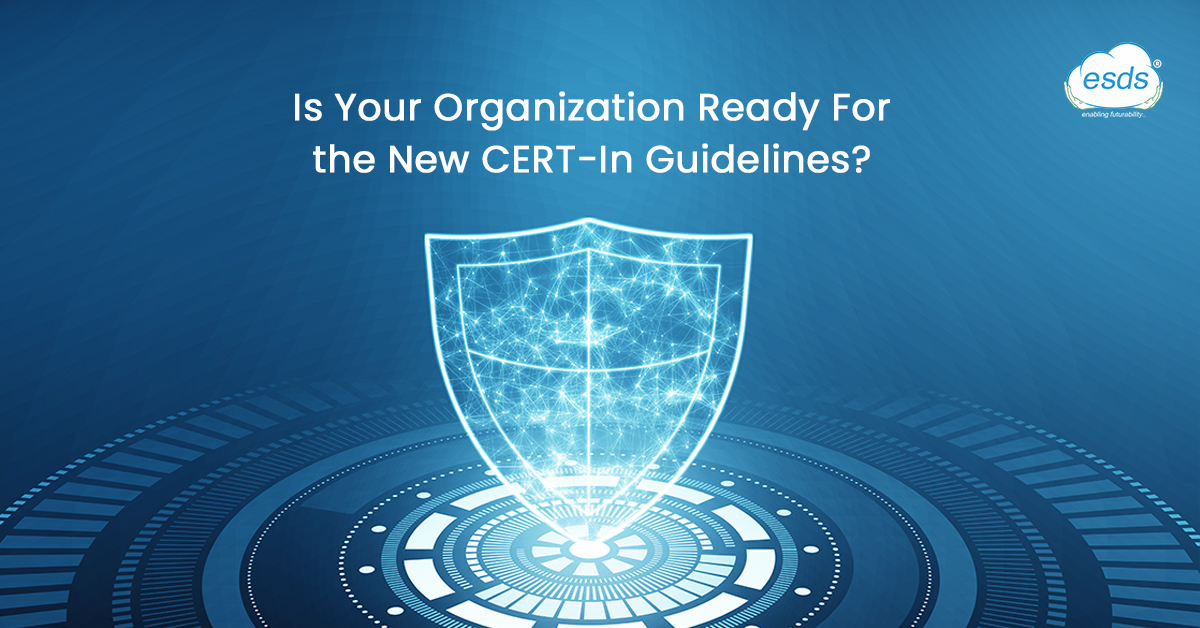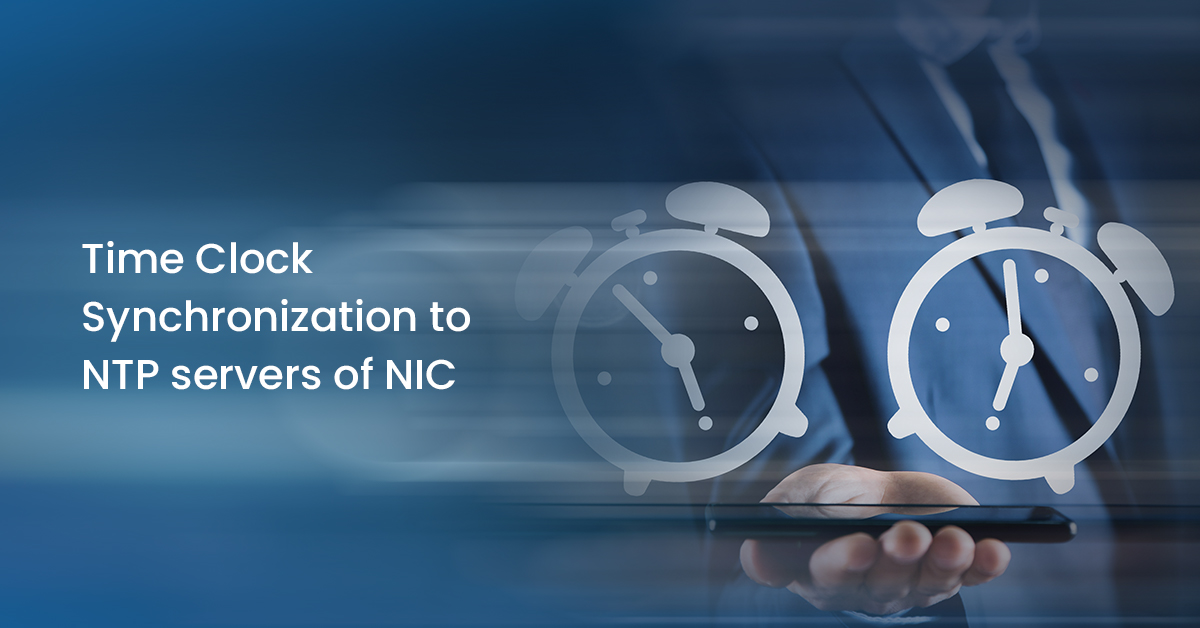Is Your Organization Ready For the New CERT-In Guidelines?
Here’s the best way to prep your IT infrastructure and manpower for these new cybersecurity directives

12.67 lakh was the number of Cyber Attacks registered in India till November 2022. With this severity there was a rising need of stringent directives and guidelines in order to enhance and strengthen the cyber security of the country. It was on 28th April 2022 when the Computer Emergency Response Team (CERT-In), a department working under the Ministry of Electronics and Information Technology (MeitY), issued new policies and procedures under subsection (6) of section 70B of the Information Technology Act, 2000, relating to information security practices, procedures, prevention, response and reporting of cyber incidents for Safe & Trusted Internet. This was in line with the directive to enhance and improve cyber security in the country. The directions were to be effective from 60 days from the date of the issue of the guidelines.
Following are some of the major requisites mentioned in the guidelines
Time Clock Synchronization to NTP servers of NIC

All the service providers, Data Centers, intermediaries, government organizations, and body corporates in India shall compulsorily connect and synchronize their time with either the Network Time Protocol (NTP) server of the National Informatics Center (NIC) or the National Physical Laboratory (NPL), or with servers traceable to these NTP servers.
Cyber Incidents Reporting Within 6 Hours to CERT-In

In case of incidents all the service providers, intermediary, Data Center Government Organization, or a body corporate will here on have an obligation to report these incidents within 6 hours of noticing or being brought to notice about such incidents via email, phone or fax.
Single POC to Communicate with CERT-In

The service providers, intermediary, Data Center, Government Organization, or a body corporate must designate a single point of contact to interface with CERT-In, who when ordered or directed by CERT-In must take action or provide information or any similar assistance in a defined format to CERT-In that will contribute towards cyber security mitigation actions and enhanced cyber security situational awareness.
Maintain 180 Days Logs

It will be mandatory for all service providers, intermediaries, Data Centers, body corporate, and Government organisations to securely maintain logs of their ICT systems for a rolling period of 180 days within the Indian jurisdiction.
Maintain KYC data and records of financial transactions for 5 years

The virtual asset service providers, virtual asset exchange providers, and custodian wallet providers should compulsorily maintain the records obtained as Know Your Customer or of financial transactions for a period of five years.
Is Your Organization Ready to Adhere to all the guidelines?

In addition to requiring the reporting of cyber events in India (as mentioned above), the new CERT-In guideline also encourages enterprises to overhaul and rethink their entire IT and network security architecture. In these instances, the main concern is whether CERT-In’s new guidelines will help your organisation run its operations smoothly or be another tedious task that all organizations will need to adhere to in the Indian jurisdiction.
The biggest concern for organizations still lies with reporting a cyber-incident within a six-hour time frame. Analyzing the overall security posture of the organization is vital and aligning the IT strategy with the entire business is now an important part of the boardrooms.
As technology advances, so do the cyber threats that organizations must face. To help combat these threats is the main motto for the new guidelines for organizations to follow in order to strengthen their cyber security posture. But is your organization ready to implement these new guidelines?
One key aspect of the new guidelines is the emphasis on incident management. CERT-In stresses the importance of having a clear incident management plan in place, which should include procedures for identifying, assessing, and responding to security incidents. This is crucial in today’s digital age where cyber-attacks are becoming more frequent and sophisticated.
Following are some of the crucial queries that organizations functioning within the Indian jurisdiction need to answer.
Does your organization have an incident response plan in place? Are your employees trained to recognize and report security incidents?
Another key aspect of the guidelines is the focus on securing the endpoint. The guidelines recommend using endpoint security solutions such as antivirus software, firewall, and intrusion detection systems to protect against malware and other cyber threats. But are all the endpoints in your organization secured? Are they regularly updated and patched?
The guidelines also recommend the use of encryption to protect sensitive data and suggest organizations implement a data classification scheme to identify and protect sensitive data. But is your organization’s sensitive data encrypted? Is it classified and protected accordingly?
The guidelines also recommends for the organizations to conduct regular security audits and penetration testing, to identify and remediate vulnerabilities in their IT infrastructure. But when was the last time your organization conducted a security audit?
ESDS SOC as a Service: Your Helping Hand To Adhere To All The CERT-In Guidelines

The new guidelines are to facilitate organizations to follow in order to strengthen their cyber security posture. But as cyber threats continue to evolve, it can be a daunting task for organizations to keep up with the latest security technologies and best practices. This is where ESDS SOC as a Service comes in as a helping hand.
ESDS SOC as a Service is a comprehensive security solution that can help organizations adhere to all the CERT-In guidelines. By outsourcing security operations to a third-party provider, organizations can access the expertise and resources they need to protect their networks and data.
One of the key features of ESDS SOC as a Service is incident management. ESDS SOC as a Service provides a clear incident management plan that includes procedures for identifying, assessing, and responding to security incidents, which is in line with the new CERT-In guidelines. This ensures that organizations are prepared to handle any security incidents that may arise.
Another important aspect of ESDS SOC as a Service is endpoint security. ESDS SOC as a Service provides endpoint security solutions such as antivirus software, firewall, and intrusion detection systems to protect against malware and other cyber threats, which is in line with the CERT-In guidelines. This helps organizations secure all the endpoints in their network, ensuring they are protected against cyber threats.
ESDS SOC as a Service also provides encryption solutions to protect sensitive data and suggests organizations implement a data classification scheme to identify and protect sensitive data, which is in line with the new CERT-In guidelines. This helps organizations keep their sensitive data protected and secure.
The ESDS SOC as a Service also recommends regular security audits and penetration testing, to identify and remediate vulnerabilities in their IT infrastructure, which is in line with the new CERT-In guidelines. This ensures that organizations stay compliant with the latest security standards.
To Conclude
Implementing the new CERT-In guidelines is essential for any organization to stay protected from cyber threats. It is important for organizations to regularly evaluate and assess their security posture to ensure they are complying with these guidelines. In the event of non-compliance, organizations may face penalties and reputational damage. So it is important for organizations to take the necessary steps to ensure they are in compliance with the new CERT-In guidelines. Regularly evaluating and assessing your organization’s security posture is crucial in protecting your organization from cyber threats.
In summary, ESDS SOC as a Service is a comprehensive security solution that can help organizations adhere to all the CERT-In guidelines. It provides a range of security solutions that can help organizations protect their networks and data, as well as stay compliant with the latest security standards. Organizations that are looking for a helping hand to adhere to all the CERT-In guidelines, ESDS SOC as a Service is the perfect solution.
